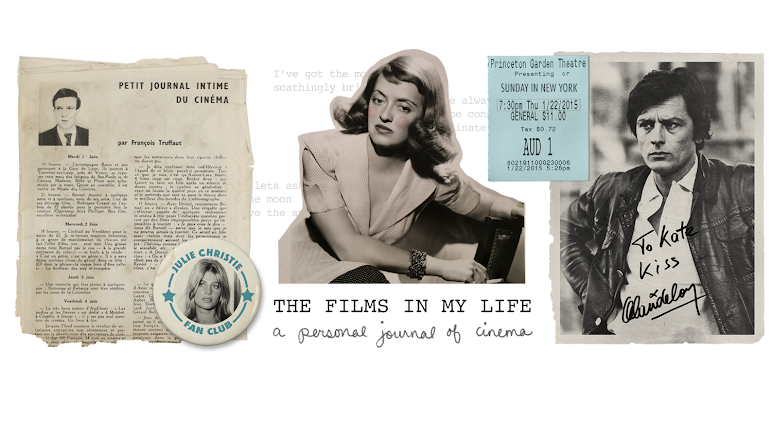
Warning - there are pictures and gifs of rats in this post. Just a heads up in case that unsettles you!
My favorite historical time period is the Middle Ages, particularly the time of the Black Death. I honestly can't explain why, but it's fascinated me ever since I was in high school. So you can understand how excited I was when I stumbled upon The Pied Piper -- a 1972 film directed by Jacques Demy, starring Donovan. Yes, you read that right, a movie about the Black Death directed by the Frenchman who brought us Umbrellas of Cherbourg and Donkey Skin, starring the Scottish folk singer Donovan. It almost sounded too good to be true.

The Pied Piper is a British release, shot in England and on location in Germany. It recounts the story -- albeit with a few modern twists -- of the Pied Piper of Hamelin. The legend varies, but pretty much every version begins with a rat infestation in the town of Hamelin, Germany. The townspeople ask a piper to rid the town of the rats in exchange for money, but once he succeeds in doing so they refuse to pay him. Seeking retribution, he comes back to the town and lures the children away from their parents.
Nowadays when we think about plague we tend to associate it entirely with the 14th century pandemic. While that outbreak was certainly the worst, plague was actually a consistent problem throughout the last millennia -- in fact it still is, in certain parts of the world. And although the exact link between rats and sickness wasn't discovered until the last century (spoiler alert - it's the fleas!) people recognized that there was a connection early on. When the town of Hamelin was overrun with rats, they knew that the pestilence couldn't be far behind, which is why they enlisted the help of that infamous piper.
Over time, most stories about The Pied Piper of Hamelin have morphed into a Black-Death-era tale, even though the legend pre-dated The Black Death by about six decades. This film also sets the tale during that most notorious scourge, which definitely works for this particular recounting of the story. (Although I'm going to be super nerdy and point out that "the year of the black death" is slightly inaccurate since it started in January 1348 and lasted through at least 1351.) For our characters, living in 1349 Hamelin instead of the more accurate 1284, plague is everywhere. The world seems to be ending, every town in the vicinity has become infested, and the mere sight of a rat strikes panic into the heart of the villagers. Each scene is imbued with a sense of frenetic urgency, since plague looms in the distance, ready to strike at any minute.

Overall the film lacks the visual punch that Demy has become known for -- this is no Young Girls of Rochefort -- but while the overall color palette may be less saturated, there are still plenty of visuals that have Demy-esque flair. I think one of the things that set Demy apart is his eye for poetic compositions and offbeat fairy-tale-like details. Seeing him put those talents to use in a film about one of the most depressing eras in human history is incredibly amusing.
When the movie begins, we are introduced to a troupe of traveling actors who traverse the countryside in a wagon with a biblical painted backdrop attached to the side. This scene of the medieval mural rolling through the forest was definitely evocative of Demy's normal style. The actors are looking to decamp in a new town, and they make a disturbing discovery in the first village they come upon...

They quickly hightail it out of there, and head for Hamelin. Along the way they pick up Donovan, the titular character in our medieval tale.
It was uncanny how well Donovan fit into the 14th century setting. I'm not a music scholar by any means, but it's my understanding that a lot of folk songs can trace their roots back to medieval music. One of my favorite Marianne Faithfull songs, Scarborough Fair, is thought to originate from the time of the Black Death, and uses a scale called the Dorian Mode. I found this youtube video on the Dorian Mode very informative, even for a layperson like myself. To my untrained ears, Donovan's songs fit right in with this style and seemed to be perfectly suited to the era of the Pied Piper.
I especially loved his song "What a Waste of Time to be Unhappy" (you can listen to it on youtube here) and his groovy painted guitar. One of the fun things about this grey color palette is that when bright color is introduced it really stands out and adds a lot of visual interest to the film.

When they arrive, Hamelin is under quarantine. Lisa, the daughter of the Burgermeister, is sick. The Jewish apothecary reassures the Burgermeister that it's just a fever, but the priests are positive it's plague (despite no symptoms of plague... eye roll) and insist upon giving her her last rites. Then Donovan's music wafts into her room and, like magic, her health improves. The Burgermeister invites the piper into the town so that he can visit his daughter and cure her in time for her impending marriage to Franz, the son of the Baron, played by John Hurt.

Cathryn Harrison was only 13 when she played 32-year-old Hurt's betrothed, which is totally normal if you're going for feudal accuracy. Luckily their onscreen relationship is incredibly chaste -- I don't think they even touch at any point, let alone kiss. It still feels very icky to see this part of the story unfold, but Demy handles it well. The wedding itself is a condemnation of the church-assigned role of women in Catholic history, Hurt is consistently portrayed as a Thing from which we want her to escape, and (spoiler) the ending of the film reminds us that Lisa was still a child, and she deserved an innocent, blithe childhood free from marriage, pestilence, and the influence of the greedy immoral adults in her village.

Although the wedding scene is decidedly depressing and unpleasant, it does give us one of the most Demy-like settings in the movie. Set against a backdrop of flowers and greenery, Lisa and Franz stand upon a blue and white polka dotted altar while three priests dressed in head-to-toe red preside over the ceremony. It would appear that the wealthier wedding guests broke out their most colorful duds for the occasion, ranging from priestly reds to intense purples. In 14th century Germany purple dye would have been a rare commodity, so it speaks to the wealth of the wearer and the importance of the occasion that multiple guests were wearing the rich hue.

My favorite part of the film was the wedding party sequence. First they bring out a whole swan for the feast. If you love swans, like I do, it's definitely heartbreaking to think about people feasting on one, but there's no denying that the imagery of this beautiful bird being served on a flower-adorned tray is something out of a fairy tale.

The composition here is lovely. It perfectly captures the calm before the storm, for any minute now, the wedding cake will be carried into the dining hall. An edible pint-sized replica of the cathedral that Franz's father is paying to build to ensure that he stays on God's good side, the cake is a symbol of the trust that construction of the church will save the town from the plague. It represents Hamelin's belief that a combination of wealth and piety can protect them from God's wrath.

But the cake is filled with rats. Hundreds of rats. Before long they're on the tables, eating the wedding banquet and chasing the guests from the room. All that remains is the child bride, watching the rodent display unfold around her before she quietly gets up and exits the room alone.
What follows is an interesting spin on the legend of the Pied Piper. Here he is not portrayed as a vindictive child-murderer, but a savior figure who rescues the children from all of the troubles that befall medieval youth, like child marriage or a lethal bite from a tainted flea. As he leads them away from the plague-infested village, they slowly fade into the sunrise -- turning this classic legend into a mythical fable.

I also want to note that this film deals very directly with antisemitism. Michael Hordern plays the Jewish apothecary who correctly diagnosed Lisa near the start of the film. He is the smartest man in town, probably the most honest, and definitely their safest bet at actually preventing plague. I'm not usually a fan of period films foreshadowing history, but I had to chuckle when he lamented that he knew rats were harbingers of plague but *shakes fist at the ceiling* if only we knew WHY!
When the apothecary is unable to find a cure or prevent the plague in a timely manner (it would be another 500 years before the first plague vaccine was developed by Alexandre Yersin in 1896, but yeah, give the guy two days to come up with something) they accuse him of bringing rats into the city and spreading disease. He's convicted of witchcraft and burned at the stake.
His death is intercut with images of Donovan leading the children out of the town, thereby implying that the children weren't only being saved from the impending pestilence, but also from religious extremism. This kind of backwards thinking was rampant during the time of the Black Death. Jews were often accused of poisoning well water and spreading plague. Because they bathed more often and washed corpses before burial, their communities were often less affected by plague than Christian communities that didn't have the same strict hygiene laws. Excessive antisemitism combined with an ignorance about germs and bacteria festered into anti-Jewish violence throughout Europe. Over 500 Jewish communities were destroyed during this period, and I was very impressed that The Pied Piper included this aspect of medieval history in the film, since it is often overlooked.
I'm incredibly pleased that I discovered this film. It exceeded my expectations and proved to be a very entertaining, visually interesting movie, grounded in humanism and a benevolent message that, for a movie taking place in 1349, is still incredibly relevant to this day.



















3 comments:
What an unusual film! I've long had a strange fascination with the Pied Piper story, and a happier ending to it really interests me. Naturally, my library system doesn't have this, but I'll keep an eye out for it at movie stores, etc. Maybe I'll get lucky and Amazon will put it up for free viewing some day.
Have you seen any other film versions? This was the first one I've ever heard of!
This was such a good read! I loved your historical commentary throughout. I've always been fascinated by the medieval period as well - but nothing close to your level of knowledge!
Post a Comment